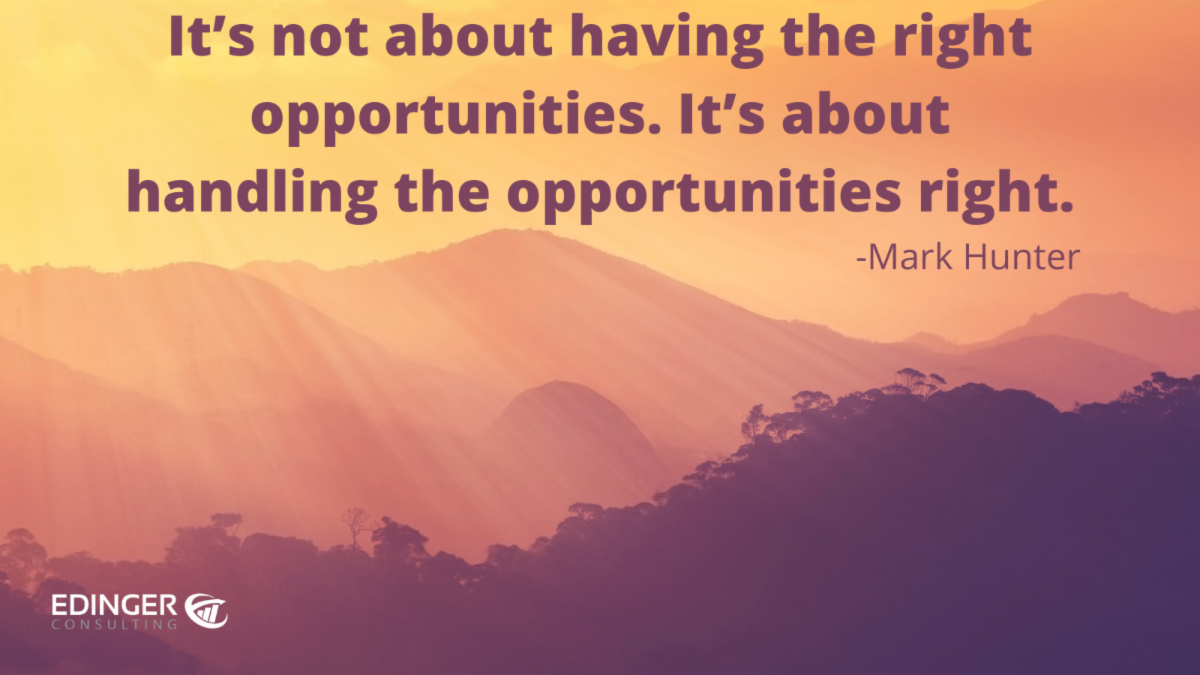
January 21, 2021
Do You Know Your One Big Thing?
Since I’m in the middle of writing a book, I’ve spent a lot of time recently thinking about the main idea and the impact that idea can have. I was having a hard time zeroing in on a single overarching message. There are so many things I’m passionate about, especially in business: strategy, leadership, revenue growth, sales, and so on. I hadn’t realized how hard it is to boil this down to ONE big thing.
As it turns out, this is a common struggle leaders face. I have learned more about it by reading The ONE Thing: The Surprisingly Simple Truth Behind Extraordinary Results, by Gary Keller and Jay Papasan. Though the title is simple, the insights are deep: the potential of your efforts is determined by how narrow your focus is. At any given time, there is only one thing that you should focus on doing: your “one thing” is what moves you closest or fastest toward your goal - “What’s the ONE thing I can do such that by doing it everything else will be easier or unnecessary?” The authors argue that this narrow focus enables you to be more productive, effective, and successful, for goals in both your personal and professional life and in the short-term as well as the long-term.
As leaders, we all have room to learn from this powerful conclusion. In the short term, the sooner you can identify your “one thing,” the earlier you’ll be able to unlock a more productive mindset, and achieve better personal and professional outcomes. Inevitably, there will always be work undone at the end of the day, quarter, year – identifying your “one thing” will inform how you prioritize and provide clarity on the best way forward.
In the long-term, reconnecting your goals to a more focused purpose can improve outcomes. Extraordinary results are rarely accidents - they come from choices we make and actions we take. When your purpose and actions are in sync, you move more quickly towards your goals. In turn, achieving your goals more quickly leads to better outcomes.
I encourage you to reflect on your “one thing.” Remember that purpose doesn’t always have to be something concrete and definitive. Purpose can change over time and lead you to pursue a variety of goals. What really motivates you day after day? Think about what drives you, how your it shows up in your day-to-day life, and start the New Year with a refreshed focus on your “one thing.”
How to Connect Meaningfully Online:
Even before the pandemic, there had been a shift toward remote work, and I wrote about the value of using videoconferencing in this HBR article (if only I had the foresight to invest in Zoom!). While I don’t think video can completely replace face-to-face interactions over time, it is a great alternative and can be very effective. And there’s a good chance that even with widely available vaccines, people will continue to work remotely for at least part of the time in the next year. So we all might as well get used to using it!
Video conferencing can be just as warm and engaging as an in-person meeting, but you need to know these three tips to make each remote interaction meaningful:
- Don’t be all business. One of the best parts about being in the office is the opportunity to have hallway or “water cooler” conversations and build connections with your coworkers. In a remote setting, this can be recreated if you are intentional and make time in every meeting to have a personal conversation. I’ve seen icebreakers, trivia questions, and reflection prompts all used effectively. I’ve also seen leaders host virtual coffee meetings and happy hours, setting a casual, professionally social tone for the interaction. You’ll find that, over time, these small inquiries can help create bonds with and among your team members.
- Be present and eliminate distractions. One of the hardest parts of remote work is setting effective boundaries. When it comes to being in virtual meetings, the draw to multitask can inhibit engagement by all parties. Silence your cell phone, turn off email notifications – just as you would if you were meeting in person. This intentionality means you’ll be more likely to pick up on emotional cues, ask better questions and stay in the moment – each of which will help the interaction be more meaningful.
- Be extra considerate of your presentation. When you are joining meetings from your home, it’s easy to let your presentation be more casual. Be aware of your posture, language and energy. Joining a meeting from the couch probably won’t send the same message as would your workspace. By and large, you should present yourself as you would in the office (save any dress code changes that have taken effect). Doing so will establish professionalism and indicate your interest in your meeting participants.
Whether you’re meeting with clients, business partners, or your team, remember these three tips to ensure every interaction fosters connection. Meaningful interactions result in more cohesive teams and stronger relationships.
Current Read:
In your day to day, you likely use at least a handful of software products that make your job easier and business stronger. But technology is innovating at unprecedented rates – and frankly, it’s hard to keep up with which products are setting the industry standard. As someone who’s been along for the ride, I found this brief Forbes interview with Twilio CEO Jeff Lawson to be an interesting perspective on the power of software and technological transformation:
Twilio CEO Interview: The Superpower Of Digital Transformation (forbes.com)
Quotable:


